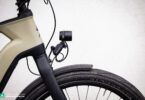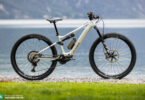Although Shimano motors are a popular choice amongst eMTB manufacturers, the Japanese development team has been quiet for quite some time. However, at the end of last year, they introduced the Shimano EP801, which replaces the proven EP8 model. The latest generation of Shimano’s popular ebike motor is supposed to offer more power and countless clever functions, and thus cover a wider range of applications. But how did it fare against the competition in our 2023 ebike motor group test?
This review forms part of our big ebike motor comparison test. Here you’ll find an overview of all 13 motors in review, along with lots of exciting background information, and helpful buying advice for your next purchase!
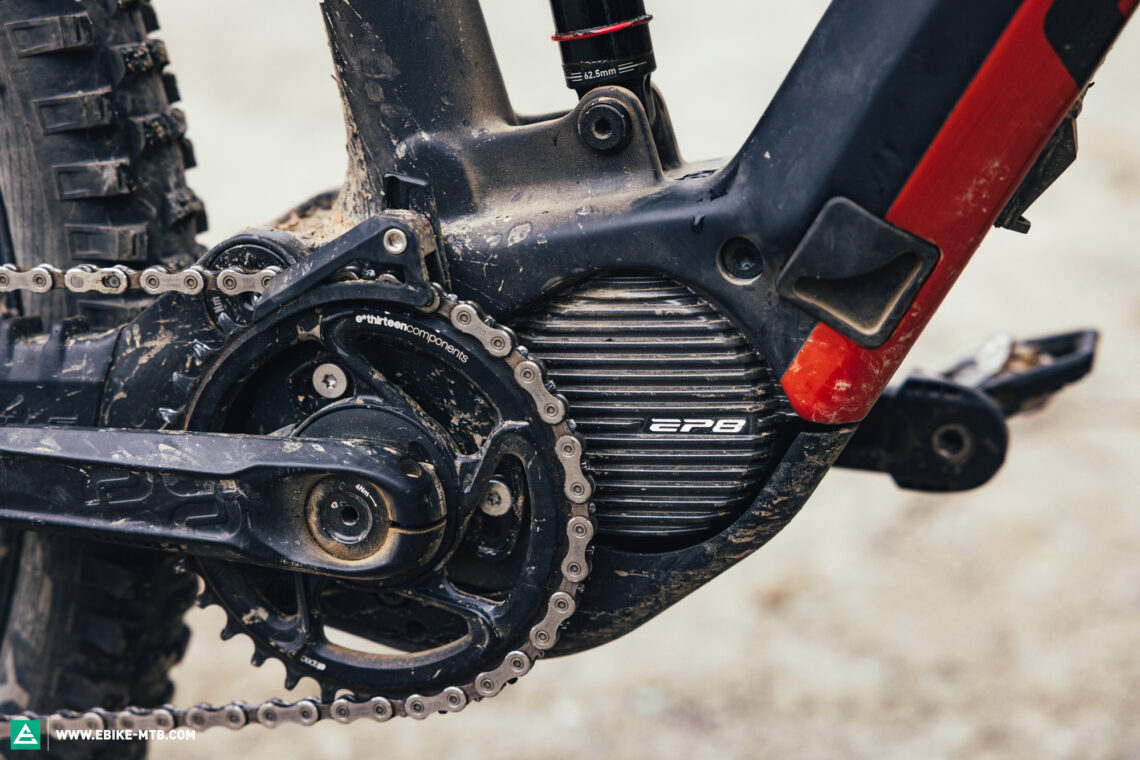
It’s impossible to imagine the world of cycling without Shimano. As one of the biggest component manufacturers on the planet, the Japanese multinational produces everything from drivetrains to brakes – and pretty much anything you can bolt onto a bike. On the other hand, Shimano are also one of the true ebike pioneers, and have been an integral part of the sector since the very beginning. Shimano motors make up a big chunk of the e-drive market and can be found on countless bikes. In our huge 2023 e-mountainbike comparison test with 30 competitors, 8 bikes come equipped with Shimano motors, six of which rely on the older EP8 version, while one of them comes with the new Shimano EP801, which was introduced in 2022 as a replacement for the EP8. Like its predecessor, the Shimano EP801 is the flagship model in Shimano’s motor portfolio, sitting above the cheaper yet almost identical and equally powerful Shimano EP6, which weighs slightly more due to the cheaper aluminium housing. The latest EP801 version is based on the tried and tested Shimano EP8, but comes with revised software and hardware. The updates should give it more peak power, and improve the level of assistance provided over a wider range of pedalling cadences The new EP801 is also the first Shimano motor that’s compatible with the new Shimano XT Di2 drivetrain, which features countless clever functions, including the Shimano ABS function, which was developed in close collaboration with Blubrake and is meant to enable safe braking, especially on wet surfaces.
Shimano also offer a throttled version of the Shimano EP801, the EP801 RS, which shares the same hardware with the conventional EP801, but has different software which reduces the maximum torque from 85 Nm to 60 Nm. Apart from the different torques and fancy RS sticker, the two motors are pretty much identical. For the time being, the EP801 RS is only used by Orbea with their Rise light eMTB, which is the perfect example that you can indeed create a light eMTB with a big motor if you pair it with the right battery concept – and the Rise is a belter! Like Bosch, Shimano offer an excellent global service network, with Shimano Service Centres positioned strategically all over the world serving as the first contact point for end users – whether it’s for servicing, maintenance or repairs. For quite a few years now, Shimano have been providing service support for third-party batteries too, which is a massive advantage for both manufacturers and people who like to customise their bikes.
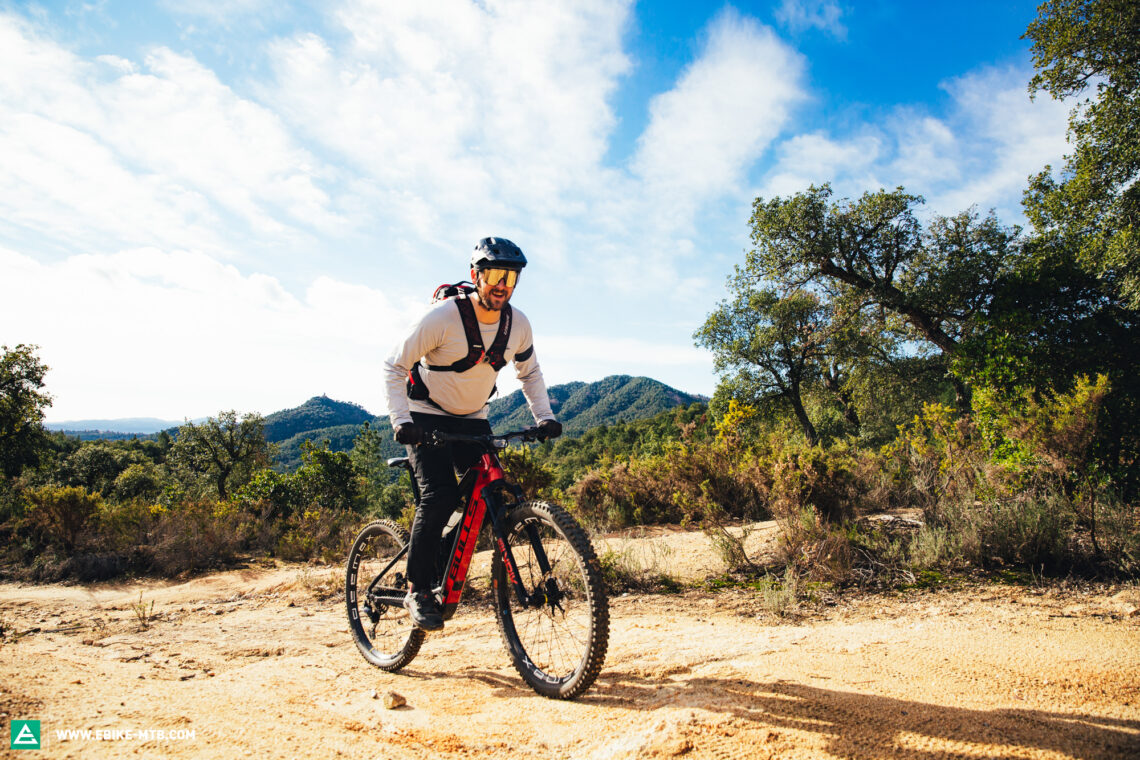
The Shimano EP801 in detail – sensible development?
Although it’s hard to tell the difference between the Shimano EP801 and its EP8 predecessor from the outside, the inner workings were given a thorough overhaul. Not only did Shimano revise the electronics from the ground up, but also increased the peak power from 500 to 600 watts. Add the 85 Nm of torque, and the EP801 plays in the same league as the top dog in this test, the Bosch Performance Line CX – at least on paper. Tipping the scales at 2.7 kg, it’s just as heavy as its predecessor, and also one of the lighter full-fat motors in this test.
The Shimano EP801 draws its power from either a 504 Wh or 630 Wh Shimano battery. Alternatively, bike manufacturers have the freedom to combine the drive with third-party batteries. While the 630 Wh battery is a good compromise between weight and capacity, Shimano should think about developing a bigger battery too. Some manufacturers combine the Shimano EP801 motor with bigger third-party batteries with capacities over 700 Wh. If you’re thinking of upgrading from an EP8 bike to an EP801 model, you should know that your old battery won’t be compatible with the new motor, which is mainly due to the revised electronics and an update in the battery management systems. As a result, batteries with the previous BMS can no longer be used.
The EP801 uses the same displays and remotes as the Shimano EP8 motor. The most common combination consists of the SC-EM800 display and minimalist, bar-mounted Shimano EM800-L remote, which ensures excellent ergonomics and haptic feedback. Clamped to the handlebar next to the stem, the colour display shows the battery level in 20% increments, and is easy to read even in direct sunlight. It also visualises the motor’s dynamics via a moving bar, along with the speed and the current support mode. The layout of the display is very tidy with the data fields reduced to the minimum, which is very pleasant. Alternatively, you could also get a small black and white display for the EP8 motor, which is integrated into the somewhat bulky SC-E5003 remote. Shimano recently launched some new remotes and displays that are intended for the cheaper Shimano EP6 drive, but are compatible with the EP801 motor system. If you prefer riding without a display at all, Shimano also offer the minimalist EW-SW310 remote, which is integrated into the bike’s top tube, taking up just as much space as the previous Shimano power button. It consists of 6 LEDs that provide basic riding data including the battery charge status and current support mode – a similar system to the Bosch System Controller.
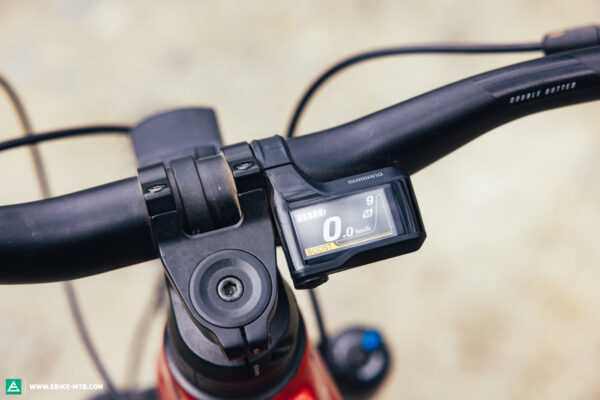
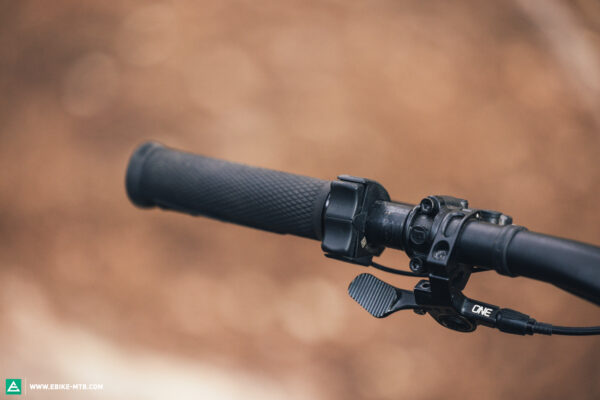
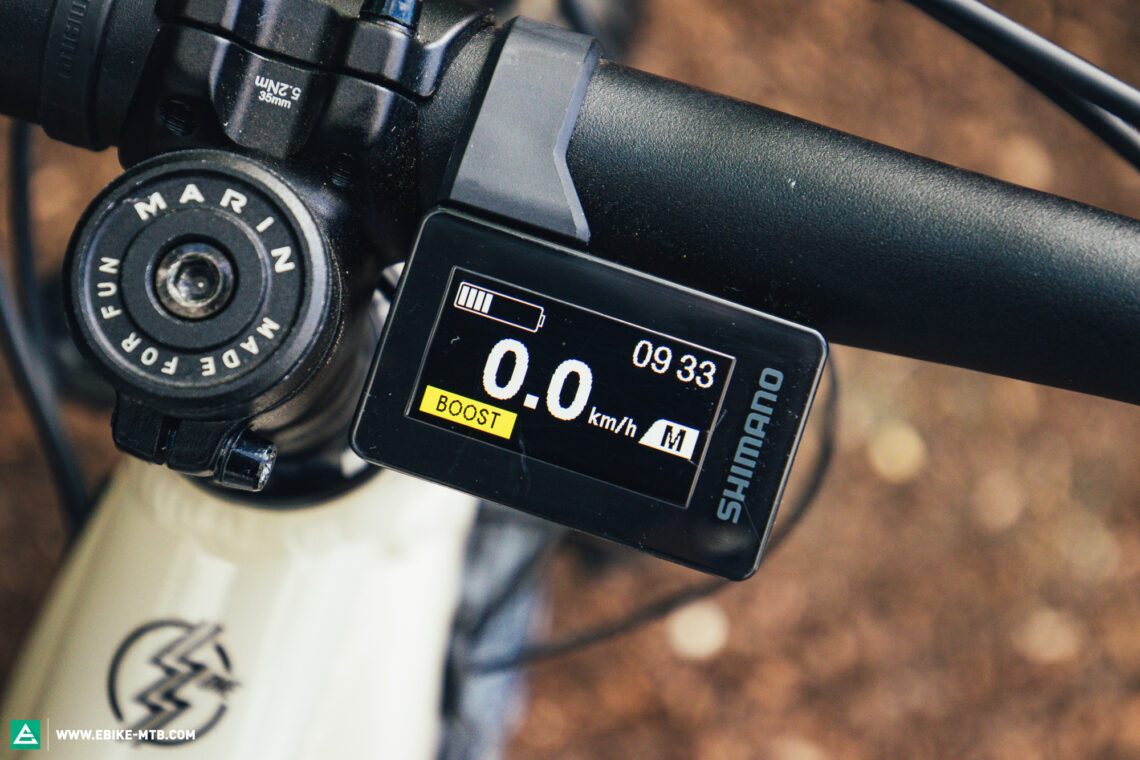
The interface between man and machine is taken care of by the Shimano E-TUBE PROJECT Cyclist app, which lets you set up two distinct rider profiles, each allowing you to configure the three support modes (Eco, Trail and Boost) individually. In basic mode, you can adjust the power, support level and response behaviour. This is particularly appealing to seasoned ebike veterans who prefer to use a familiar interface. As the name suggests, FINE-TUNE mode allows you to further adapt the assistance modes to suit your needs. When using it for the first time, you’ll be faced with an overwhelming number of curves and graphs. Once you get the hang of it, it’s a great little tool to have, allowing you to activate and configure up to 15 different support modes – a real treat for connectivity nerds who like to play around with diagrams and numbers to refine their motor setup down to the smallest detail! Everyone else will do just fine with the basic mode. Unfortunately, Shimano outsource the navigation function to the E-TUBE RIDE app, meaning that you’ll have to download a second app to create routes you want to ride with your eMTB. Furthermore, the planned route can’t be visualised on the display, so you’ll have to use a handlebar mount for a smartphone, or take the phone out of your pocket every time you need to read the map.


Testing the Shimano EP801 Motor – The good-natured one
On the trail, the Shimano EP801 convinces with a good-natured character. It’s easy to modulate and always delivers its power predictably, even with the strongest boost mode in the standard setting. However, the Shimano EP801 responds a bit more directly when starting off than the Bosch Performance Line CX, which reacts a bit more restrained and smoother here. The motor always delivers the right amount of assistance, and makes up for cadence fluctuations. It’s easy and intuitive to ride, especially for inexperienced riders, who won’t be thrown off the saddle by abrupt power spurts. Even at low cadences, it packs a punch and behaves more predictably than its predecessor, the EP8, which also feels significantly weaker than the Bosch CX drive – and not just uphill. However, with its higher peak power, the new EP801 significantly narrows the gap to the Bosch motor, though it still delivers noticeably less power in boost mode than the Performance Line CX despite sharing similar key data. This became also evident in our lab tests where, regardless of the cadence, the Shimano EP801 power curve is always slightly below the Bosch Performance Line CX power curve.

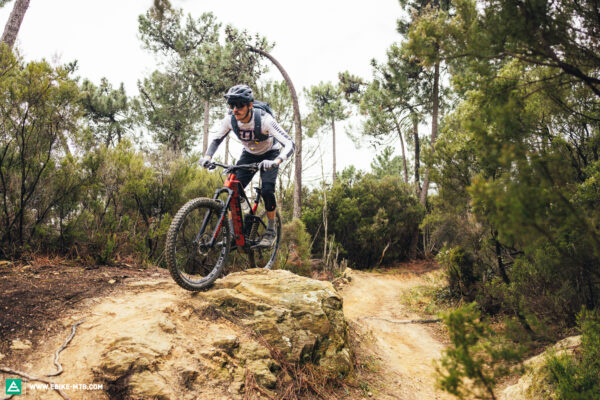
When switching from Boost to the dynamic Trail mode in the standard setting, you’ll hardly feel any difference. Trail mode adapts the assistance to the respective riding situation, but feels similarly linear as the more powerful Boost mode. For a more sensitive, progressive response, you can turn down Trail mode smidge using the E-TUBE app. In combination with the new Shimano XT Di2 drivetrain, the EP801 offers some clever features. Like Pinion’s MGU E1.12 motor-gearbox unit, Shimano’s intelligent drivetrain allows you to change gears without having to pedal thanks to the FREE SHIFT function. AUTO SHIFT, on the other hand, detects the riding situation and automatically shifts gears accordingly. This is a very cool feature, especially for chilled touring riders who don’t like shifting gears. For trail riders, on the other hand, the automatic mode isn’t a great option as the shifting can’t be adjusted to the different dynamics of trail riding.
When riding on level fire roads, the Shimano EP801 hums along pleasantly, proving one of the quietest full-power motors in the entire test field. However, it’s a whole different story when gravity takes over – the motor emits the distinctive Shimano clunking noise, which was also one of the biggest drawbacks of the old Shimano EP8. That said, the noise level of a bike also varies depending on the size and shape of the frame, which acts as a resonant body.
Our conclusions about the Shimano EP801
The EP801 doesn’t revolutionise Shimano’s motor game but is rather a sensible evolution of its predecessor. On the trail, it convinces with a good-natured character that isn’t overwhelming for beginners, closing the gap between its predecessor and the Bosch Performance Line CX. That said, it still can’t keep up with the most powerful motors in this test. The motor system is complemented by a wide range of displays, remotes and batteries, both in-house and from third-party manufacturers. This gives bike manufacturers a bigger choice of peripheral components, which is also a massive advantage for end users. The only drawback is the loud clunking noise of the motor, which is difficult to ignore on rough descents and clouds the overall great performance of the motor.
Tuning tip: if you spend lots of time on technical climbs, you should try reducing the intensity of the dynamic Trail mode from the app to distinguish it more clearly from the powerful Boost mode.
Tops
- Good-natured character
- Natural ride feeling
- Covers a wide range of applications
- Support for third-party batteries
Flops
- Loud clunking noise on rough terrain
For more info, visit shimano.com
The test field
For an overview of our big ebike motor comparison test click here
All ebike motors in test: Bosch Performance Line CX (Click for review) | Bosch Performance Line CX Race (Click for review) | Bosch Performance Line SX (Click for review) | Brose Drive S Mag (Click for review) | FAZUA Ride 60 (Click for review) | GIANT SyncDrive Pro2 (Click for review) | Panasonic GX Ultimate (Click for review) | Pinion MGU E1.12 (Click for review) |Shimano EP801 | Specialized SL 1.2 (Click for review) | Specialized 2.2 (Click for review) | TQ HPR 50 | Yamaha PW-X3 (Click for review)
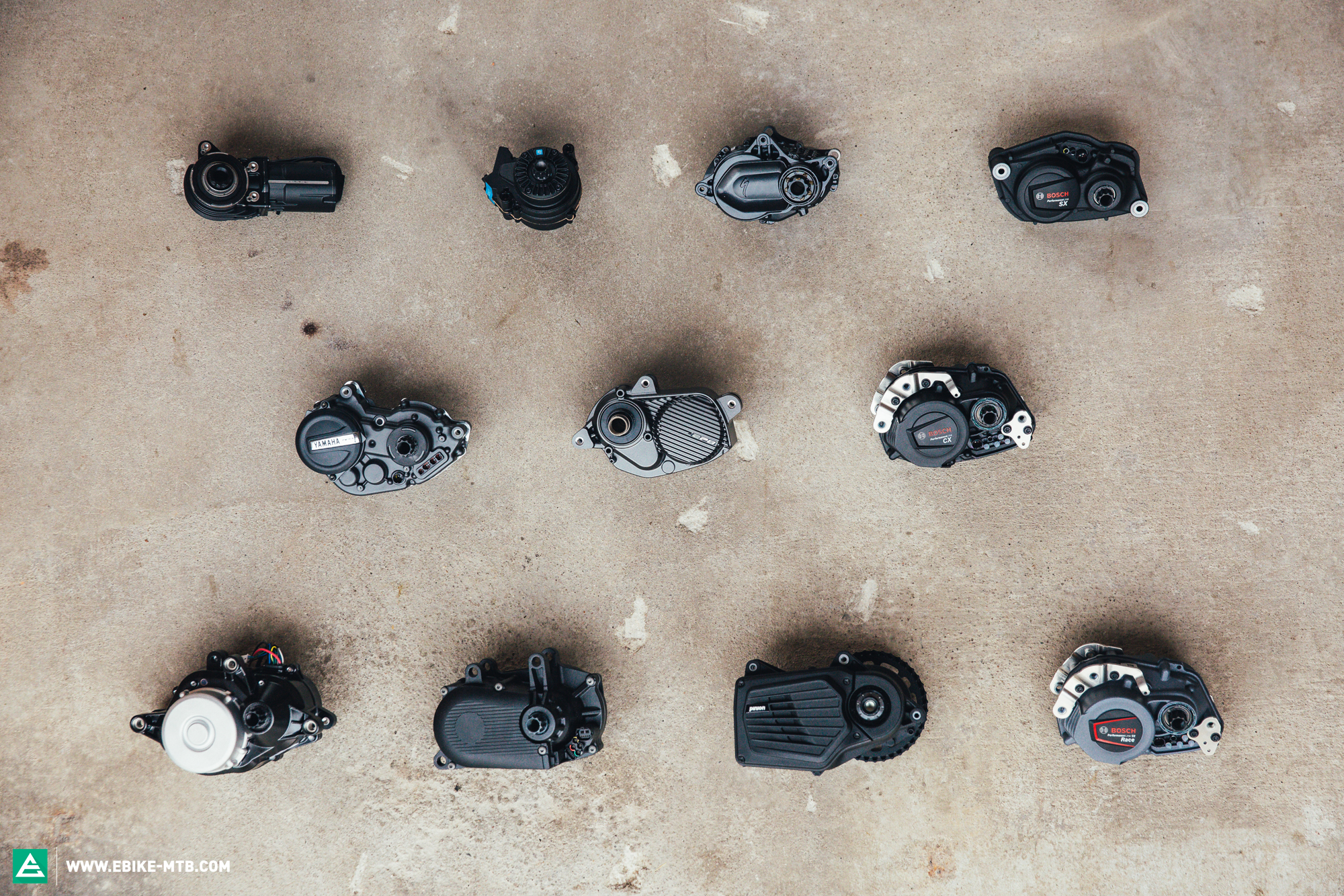
Did you enjoy this article? If so, we would be stoked if you decide to support us with a monthly contribution. By becoming a supporter of E-MOUNTAINBIKE, you will help secure a sustainable future for high-quality cycling journalism. Click here to learn more.
Words: Mike Hunger Photos: Various





